O que significa diamantes criados em laboratório?
Title:
Os diamantes criados em laboratório que adornam as joias Swarovski Created Diamonds são feitos com um processo inovador que replica a natureza de forma impecável, resultando num diamante que não se distingue de um diamante extraído em todos os seus atributos químicos, físicos e óticos. Intensamente brilhantes e lapidados com mestria, cada diamante é colocado em peças de joalheria para criar designs cativantes que brilham com um esplendor eterno.
O que torna perfeito um diamante criado em laboratório?
Title:
Os 4Cs da classificação de diamantes são universalmente reconhecidos e são uma luz guia no mundo dos diamantes, ajudando a determinar a qualidade e o valor de cada diamante criado em laboratório.
Claridade
Title:Um acabamento irrepreensível
Legenda:I.F.
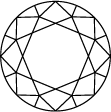
Internamente irrepreensível
VVS 1
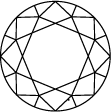
VVS 2
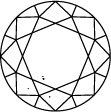
Inclusões muito, muito pequenas
VS 1
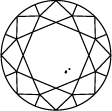
VS 2
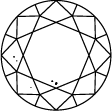
Inclusões muito pequenas
SI 1
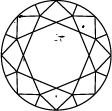
SI 2

Inclusões pequenas
I 1

I 2
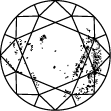
I 3
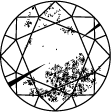
Inclusões

Corte
Title:Perfeitamente preciso
Legenda:Cor
Title:Incolor e cativante
Legenda:Incolor
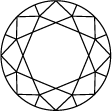
D-F
Quase incolor
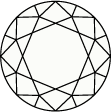
G-J
Levemente com cor
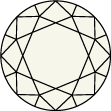
K-M
Cor muito clara

N-R
Cor clara
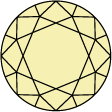
S-Z
Quilate
Title:Vale o peso
Legenda:
2,5 mm
0,05 CT

3,0 mm
0,10 CT

3,8 mm
0,20 CT

4,5 mm
0,30 CT

4,8 mm
0,40 CT

5,2 mm
0,50 CT

5,8 mm
0,70 CT

6,3 mm
0,90 CT

6,5 mm
1,00 CT

6,9 mm
1,25 CT

7,4 mm
1,50 CT

7,8 mm
1,75 CT

8,2 mm
2,00 CT

8,8 mm
2,50 CT

9,4 mm
3,00 CT
Como escolher diamantes criados em laboratório?
Title:
Os Swarovski Created Diamonds são uma colaboração única entre a ciência e a magia. Honrando o brilho da natureza com uma luminosidade irresistível, os diamantes criados em laboratório são em todos os aspetos 100% idênticos aos diamantes extraídos, exceto na forma como são criados, e estão a forjar um novo futuro para a indústria de joias com diamantes. Também representam um melhor custo-benefício.
Moissanites vs Diamantes criados em laboratório
Title:
Os diamantes criados em laboratório não se distinguem dos diamantes extraídos. Têm as mesmas propriedades de brilho, fogo e cintilação. As moissanites, todavia, são criadas para dar a ilusão de diamantes, mas em termos de composição e aparência são muito diferentes. A durabilidade, brilho e cor são muito diferentes. As moissanites não são classificadas de acordo com os 4Cs, como os diamantes criados em laboratório, são apenas classificadas pela cor.
Descobrir mais sobre diamantes criados em laboratório
Saiba mais sobre os Swarovski Created Diamonds
Title:Produção e design inovadores
Legenda:
A coleção Swarovski Created Diamonds é um testemunho do nosso savoir-faire. Estes estilos inovadores de joalharia exibem uma deslumbrante variedade de cortes de diamantes e facetas intricadas, habilmente trabalhadas para captar e transformar a luz criando uma sensação de admiração em todos os que os apreciam.
Guia de compra para diamantes criados em laboratório
Title:Encontre a peça perfeita
Legenda:
Descubra o mundo da joalheria Swarovski Created Diamonds, redefinindo o futuro dos diamantes com coleções excecionais que unem a tradição e as tendências atuais. Do brilho sobrenatural da nossa coleção interestelar à pura elegância das nossas peças de assinatura, encontre um estilo que durará toda a vida.
O guia dos 4Cs dos diamantes
Title:Controlo de qualidade
Legenda:
Uma medida duradoura de qualidade, os 4Cs são usados em todo o mundo dos diamantes para ajudar a determinar a qualidade e o valor de cada pedra. Os diamantes criados em laboratório nas coleções Galaxy e Eternity são avaliados com base nesses 4Cs pelo IGI, o Instituto Gemológico Internacional.
Perguntas frequentes
Perguntas frequentes
O que são diamantes criados em laboratório?
Os diamantes criados em laboratório são 100% idênticos aos diamantes extraídos. São criados a partir de uma “semente” em laboratório, crescendo camada a camada com HPHT (alta pressão e alta temperatura) ou CVD (deposição química de vapor) para replicar o processo natural ao longo de vários dias ou semanas, em vez de os milhões de anos na terra. Fora a origem, são exatamente iguais.
Os diamantes criados em laboratório são menos caros que os naturais?
Os diamantes criados em laboratório oferecem a liberdade de explorar uma maior variedade de joias em termos de tamanhos, formas e configurações e de forma mais fácil. A Swarovski orgulha-se de oferecer designs modernos e inspirados com diamantes de qualidade premium, o que significa que obtém pedras maiores e de maior qualidade para cada segmento de preço.
Como são feitos os diamantes criados em laboratório?
Os diamantes criados em laboratório são feitos através de um processo inovador que replica na perfeição a natureza, resultando num diamante cultivado em laboratório que não se distingue de um diamante extraído em todos os seus atributos químicos, físicos e óticos. Existem duas formas de replicar o processo de formação dos diamantes: HPHT (alta pressão e alta temperatura) e CVD (deposição química de vapor).
A tecnologia é tão brilhante como os próprios diamantes criados em laboratório. Em ambos casos, uma pequena semente de diamante é nutrida com átomos de carbono sob condições laboratoriais de intenso calor e pressão, formando o diamante camada a camada. Cada diamante criado em laboratório forma-se de uma forma única, com inclusões e padrões de crescimento únicos.
A tecnologia é tão brilhante como os próprios diamantes criados em laboratório. Em ambos casos, uma pequena semente de diamante é nutrida com átomos de carbono sob condições laboratoriais de intenso calor e pressão, formando o diamante camada a camada. Cada diamante criado em laboratório forma-se de uma forma única, com inclusões e padrões de crescimento únicos.
Diamantes criados em laboratório são diamantes reais? O que distingue laboratorial de mineração?
Sim, os diamantes criados em laboratório são 100% diamantes. São idênticos aos diamantes extraídos, possuindo a mesma composição química, dureza, brilho e fogo. Ambos são 100% carbono. Um nasce num laboratório, o outro na natureza, assim como uma orquídea cultivada em estufa é idêntica a uma encontrada na natureza. A única diferença é a origem.
Diamantes criados em laboratório e extraídos são iguais?
Os diamantes criados em laboratório são 100% iguais a um diamante extraído em todos os aspectos óticos, químicos e físicos. Apenas a origem do diamante - da terra ou de um laboratório - é diferente. Essa diferença só pode ser identificada com equipamentos laboratoriais sofisticados. Os diamantes criados em laboratório processados em joias Swarovski Created Diamonds podem ser identificados por uma gravação a laser em todos os diamantes criados em laboratório de 0,25 ct e maiores.
Um joalheiro pode perceber que um diamante é criado em laboratório?
Não, um joalheiro não pode ver a olho nu ou usando equipamentos tradicionais de joalheria a diferença entre um diamante criado em laboratório e um diamante extraído. São necessários instrumentos sofisticados de um Instituto Gemológico como o IGI para se saber se um diamante foi criado em laboratório ou se cresceu na terra.
Estes diamantes podem testar como moissanite?
Não, são idênticos aos diamantes extraídos, possuindo a mesma composição química, dureza, brilho e fogo. Ambos são 100% carbono.
A moissanita, embora também seja criada em laboratório, é um carboneto de silício criado para dar a ilusão de semelhança com os diamantes, mas é bastante diferente em termos de composição e de aparência.
A moissanita, embora também seja criada em laboratório, é um carboneto de silício criado para dar a ilusão de semelhança com os diamantes, mas é bastante diferente em termos de composição e de aparência.
O que é um simulante de diamante?
Simulantes de diamantes, como zircônia cúbica e moissanita, não são de forma alguma diamantes, mas pedras preciosas fabricadas para se parecerem com diamantes, sendo, todavia, do ponto de vista físico, visual e de composição, muito diferentes.
A zircônia cúbica é igual aos diamantes criados em laboratório?
Não, a zircônia cúbica não é igual aos diamantes criados em laboratório. A zircônia cúbica é um simulador de diamante mas é muito diferente de um diamante em termos físicos, visuais e de composição. Por outro lado, os diamantes criados em laboratório são 100% idênticos aos seus equivalentes extraídos, salvo no que se refere à forma como foram criados.





